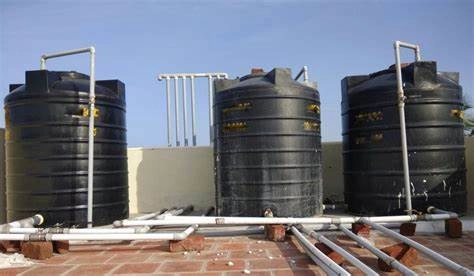Water flow is one of the most important aspects of any building’s infrastructure, especially in multi-storey structures. If the water supply is poor or uneven across floors, it can lead to daily inconvenience and long-term damage. Whether you’re a builder, property manager, or homeowner, understanding how to ensure consistent water flow in storey buildings is key to comfort and functionality.
Best Ways to Have Effective Water Flow in Storey Buildings

This post explains practical ways to achieve and maintain effective water flow in high-rise or multi-level properties, with a focus on real-world methods that work.
1. Proper Water Pressure Design
Effective water flow starts with correct pressure planning. As buildings rise, water pressure naturally drops on higher floors. To solve this, a pressure-boosting system must be built into the plumbing design.
Key tips:
Get TikTok SEO Cheat here
- Calculate the height of the building in meters and apply standard water pressure needs (typically 1 bar per 10 meters).
- Use booster pumps to maintain pressure on upper floors.
- Install pressure reducing valves for lower floors if pressure becomes too high.
2. Use of Overhead and Underground Storage Tanks
A dual-tank system helps balance supply and pressure in tall buildings.
- Underground tanks receive water from the public supply or borehole.
- Overhead tanks distribute water to each floor through gravity or pressure pumps.
The combination ensures there is always a reserve of water and stable pressure, even during peak usage times or power outages.
3. Pump Systems: Choosing the Right Type

There are three common pumping systems used in storey buildings:
- Single Booster Pump: Suitable for low-rise buildings. Not ideal for taller structures.
- Hydropneumatic System: Uses a pressure tank to supply water without a storage tank on the roof. Good for modern buildings.
- Variable Speed Pumps (VFD systems): Adjust pump speed based on demand. Energy-efficient and suitable for large properties.
Choosing the right pump system depends on the building height, number of users, and frequency of water use.
4. Pipe Sizing and Layout
Water pipes must be sized correctly to avoid pressure loss or flow restrictions.
- Use wider pipes for main supply lines, especially from the pump or tank.
- Reduce pipe size gradually as you approach outlets like taps or showers.
- Avoid too many bends or sharp turns in the plumbing layout as they reduce flow efficiency.
A well-laid-out piping system ensures even distribution of water without major drops in pressure.
Read also:
- Top 5 Ways to Stop Incoming Calls Without Blocking or Airplane Mode
- How to Block or Deactivate Bank USSD Code in Nigeria (2024)
- How to check BVN with USSD code for MTN, Glo, Airtel, 9mobile
- How to Automatically Generate and Share Meeting report Using AI
- Top 10 Websites to Download Audiobooks for Free in 2025
- Discover the Infinix HOT 50 Pro+: Ultra Slim, Ultra Durable, and Ultra Smart
- Donald Trump’s Crypto Project Hits Over One Billion Tokens Sold: A New Era in Politics Meets Finance
- Mastering Marketing in Business: Key Strategies and Effective Approaches
- Huawei Unveils the Bisheng Laser Printer X1 Series with Impressive Features
- Crypto Exchanges Exempt from Taxes as Kenya Court Overturns 2023 Finance Bill
- 9 Reliable Places to Sell Your Used Phones in Nigeria
- Ad Placement Problems: Ensuring Optimal Ad Performance and Brand Safety
- Best 10 Expense Tracker Apps for Managing Your Finances in 2024
- 11 Best Netflix Alternatives To Stream For Free
5. Regular Maintenance and Inspection
Even the best plumbing system can fail without proper maintenance.
- Check for leaks, rusted pipes, and weak joints regularly.
- Service pumps and control systems to avoid breakdowns.
- Clean storage tanks every few months to prevent blockages or water quality issues.
Scheduled maintenance extends the life of the system and keeps water flow consistent.
6. Air Release and Vent Systems
Air trapped in pipes can block water flow, especially in high-rise buildings.
- Install air release valves at high points of the plumbing system.
- Use vent pipes to equalize pressure and allow air to escape easily.
This helps prevent airlocks, noise, and pressure surges.
7. Zoning the Water Supply
In very tall buildings, it’s common to split the water system into zones—for example, ground to third floor as one zone, fourth to sixth as another.
Each zone has its own pump and control system, making it easier to manage pressure and usage.
Zoning also allows parts of the system to be shut off for maintenance without affecting the entire building.
Final Thoughts
Water flow in storey buildings depends on careful planning, the right equipment, and ongoing maintenance. By using well-designed pump systems, proper piping layouts, and storage solutions, you can ensure reliable and efficient water supply across every floor. These steps not only improve daily convenience for users but also help reduce long-term costs and damage due to poor water pressure or inconsistent flow.